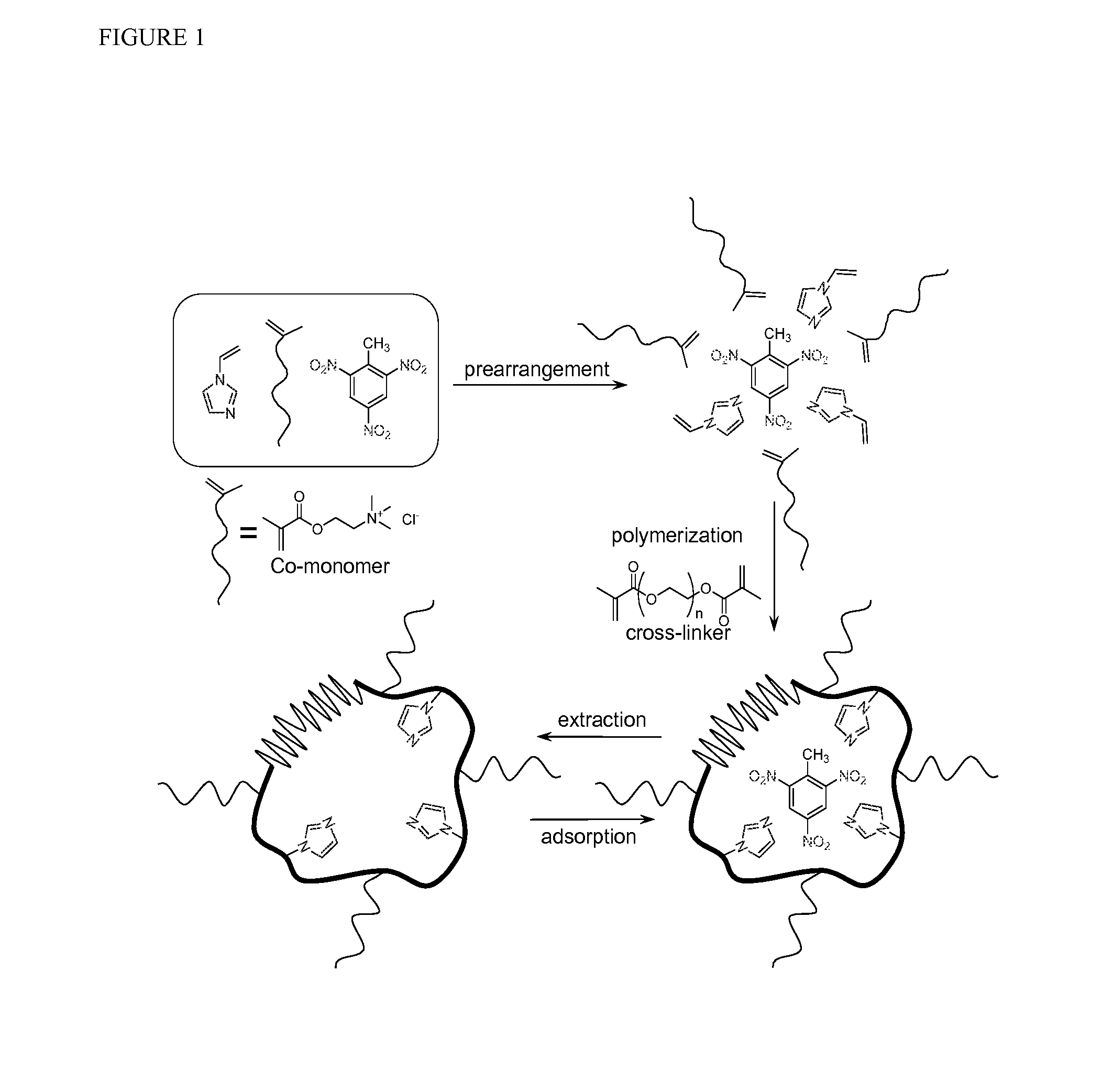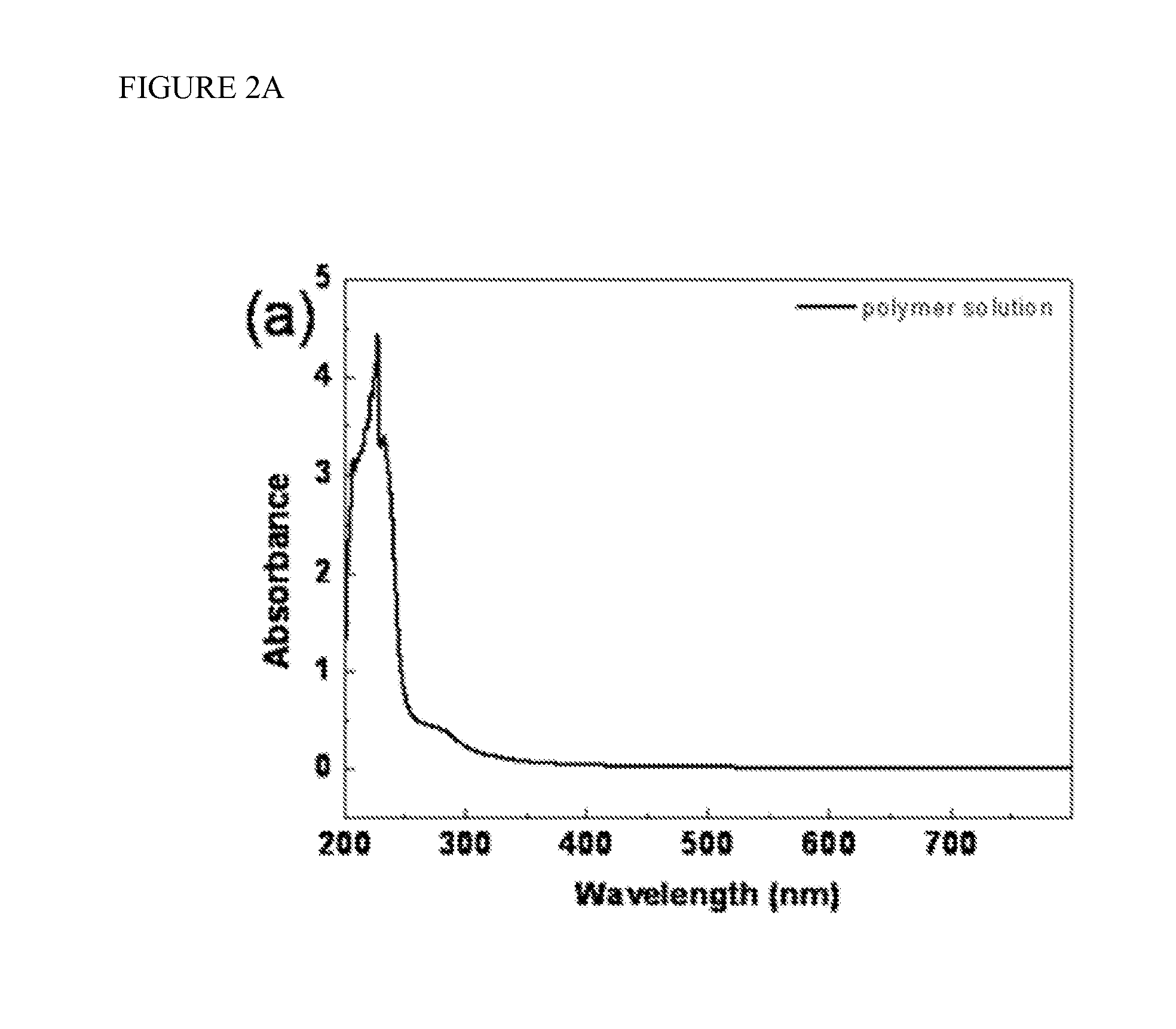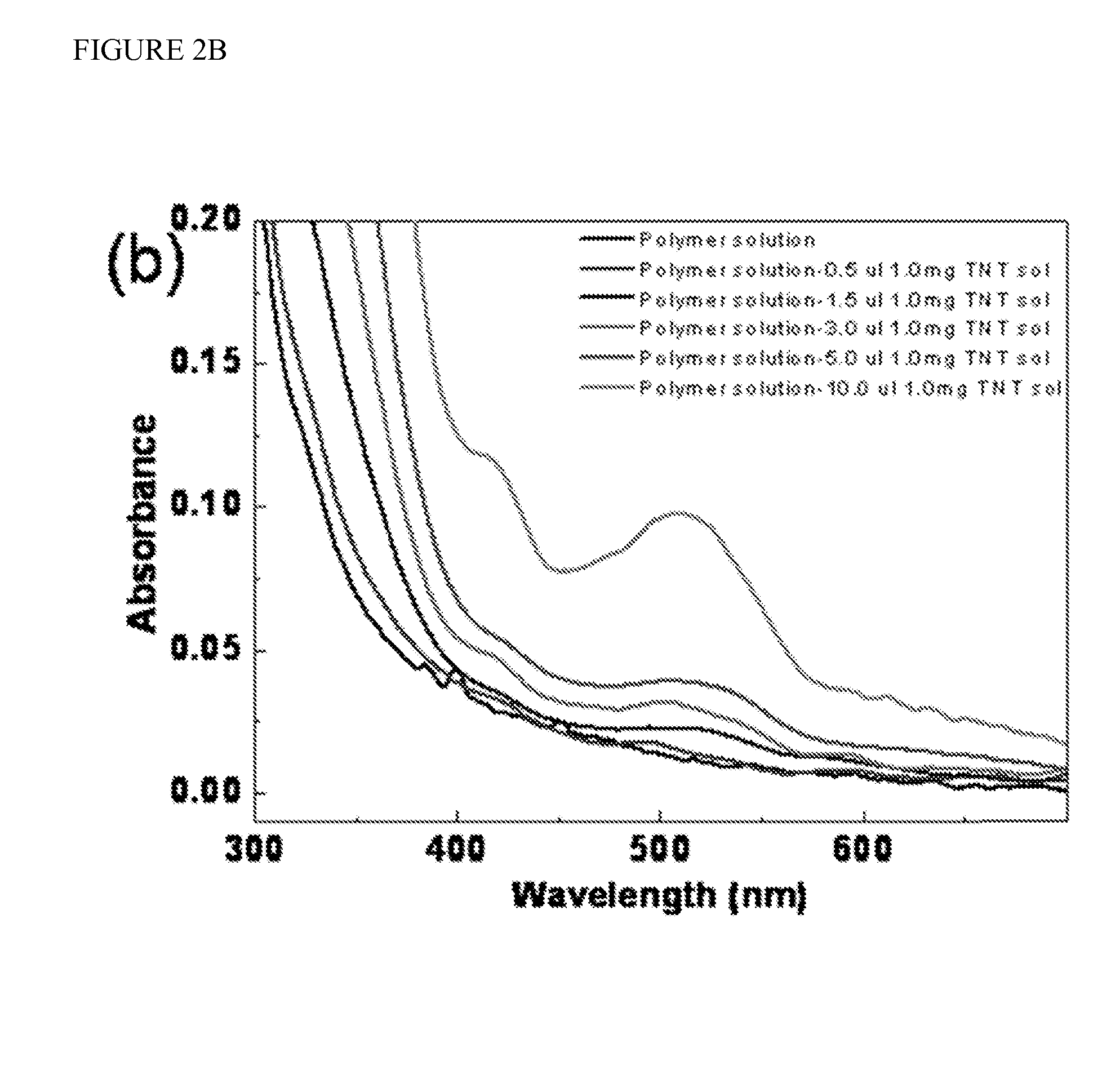Articles comprising templated crosslinked polymer films for electronic detection of nitroaromatic explosives
a technology of electronic detection and nitroaromatic explosives, which is applied in the field of articles comprising templated crosslinked polymer films for electronic detection of nitroaromatic explosives, can solve the problems of skin irritation, abnormal liver function, and high cost of techniques, and achieve the effect of increasing the conductance of materials
- Summary
- Abstract
- Description
- Claims
- Application Information
AI Technical Summary
Benefits of technology
Problems solved by technology
Method used
Image
Examples
example 1
[0073]Exposures to nitroaromatics. The current changes of the polymers of the present invention (synthesized by using TMPTDBP RAFT reagent) devices after exposure to the TNT in IPA solution and to IPA solvent alone were investigated at various RH (FIG. 4). The measurements began after stabilization of the RH level. After 1.2 minutes, 2.5 μL of 1.0 mg TNT / mL IPA solution or IPA itself was dropped on the channel area of the polymer film. In all experiments, the devices exposed to the TNT solution showed much stronger response than those exposed to the pure solvent. Before and after exposure to the TNT, the devices of the present invention measured at higher RH showed much higher absolute current level. Although the absolute current of the devices measured at lower RH was lower, the relative current increase (current after exposure (I) / baseline current before exposure (I0)) was much larger at lower RH than for those of the devices measured at higher RH, which means the TNT sensitivity ...
example 2
[0081]TNT-Induced Morphology Changes. FIG. 9 shows the surface images of films, which had been previously tested electrically, exposed to TNT solution or IPA solvent. The film morphology from a device exposed to the IPA solvent was not changed compared to the initial film. In contrast, when the film was exposed to TNT solution, clearly changed surface images were observed, caused by the reaction mentioned above. In addition, the surface images of the film over time after exposure to the TNT solution or IPA solvent were observed for 10 minutes. (FIG. 10). In the case of the IPA drop, there was no change except for solvent evaporation. However, in the case of the TNT solution drop, the clear formation and movement of domains can be seen which were reacted with TNT analyte.
[0082]To obtain atomic force microscopy (AFM) images, 5.0 μL TNT solution or IPA solvent was dropped on the polymer film which had been spincast on a silicon substrate (data not shown). The sample exposed to the IPA ...
PUM
 Login to View More
Login to View More Abstract
Description
Claims
Application Information
 Login to View More
Login to View More - R&D
- Intellectual Property
- Life Sciences
- Materials
- Tech Scout
- Unparalleled Data Quality
- Higher Quality Content
- 60% Fewer Hallucinations
Browse by: Latest US Patents, China's latest patents, Technical Efficacy Thesaurus, Application Domain, Technology Topic, Popular Technical Reports.
© 2025 PatSnap. All rights reserved.Legal|Privacy policy|Modern Slavery Act Transparency Statement|Sitemap|About US| Contact US: help@patsnap.com



